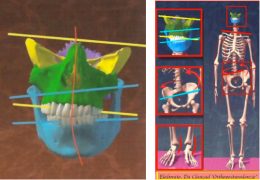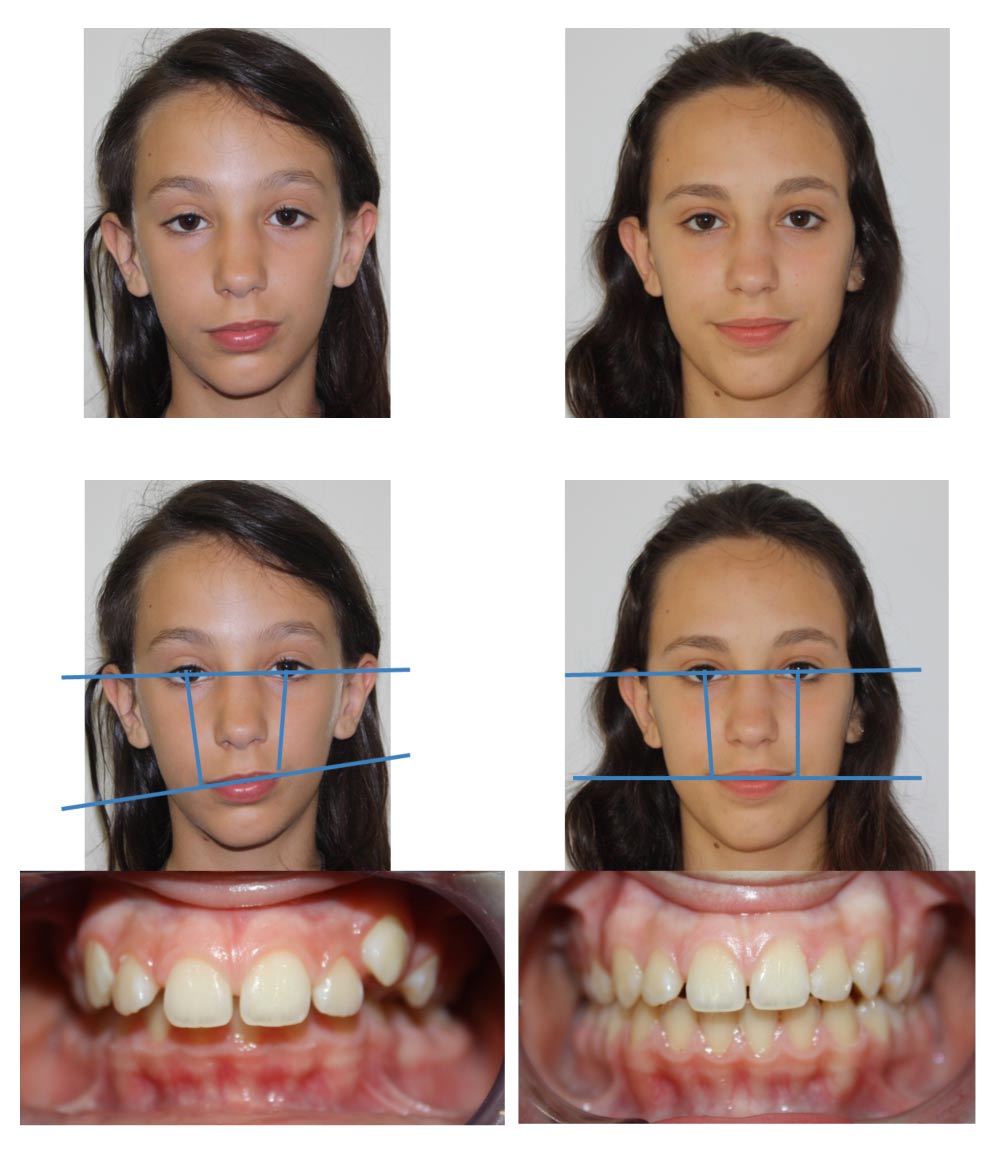
The cranial asymmetries are always linked to the occlusal relations since the upper maxillary and the jaw, that is the bones to which the teeth are attached, are fundamental pieces of the cranial puzzle. In the following case, for example, there is a right cranial torsion, the sphenoid and the occiput show an inverse rotation on the frontal plane. This translates visually onto the subject’s face in a different distance between the pupil and the outer corner of the mouth of one side relative to the other.
This asymmetry is not only confined to the skull, but it affects the rest of the body creating a postural adaptation that will lead to a different height of the scapular girdles (in this case the right shoulder will be higher), to an inclination and rotation of the pelvis (in this case it will be tilted to the right and turned to the left) and to an asymmetric posture of the foot and ankle.
Patients often come to us after months or even years of postural exercises without having managed to correct their postural imbalance.
This is due to the fact that if the occlusal skull adaptation is not corrected, this position will never change.


 it
it en
en fr
fr